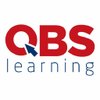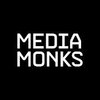Filter interviews by
Lionbridge Technologies Consultant Interview Questions and Answers
Lionbridge Technologies Consultant Interview Experiences
1 interview found
Interview Questionnaire
1 Question
- Q1. What is the oops concept, why are you using that in any programming language?
- Ans.
OOPs is a programming paradigm that uses objects to represent real-world entities and their interactions.
OOPs stands for Object-Oriented Programming.
It is used to organize and structure code for better readability, reusability, and maintainability.
OOPs concepts include encapsulation, inheritance, polymorphism, and abstraction.
Examples of OOPs languages include Java, Python, C++, and Ruby.
Top trending discussions






Interview questions from similar companies

I applied via Approached by Company and was interviewed in Jan 2024. There were 2 interview rounds.
(3 Questions)
- Q1. Customer service how can we handle to our customer queries.
- Ans.
Customer queries can be handled by providing prompt and helpful responses.
Listen actively to understand the customer's issue
Empathize with the customer's situation
Provide clear and accurate information
Offer solutions or alternatives
Follow up to ensure customer satisfaction
- Q2. In the emails we can review there queries so, we will help them accordingly there queries and if there is customer call so, we will ask from there customer I'd and we will check in our system where the cus...
- Q3. If the customer is facing any issue so, we will respond at the same time.
(1 Question)
- Q1. My education and experience of my life. How I will complete my task.

I applied via LinkedIn and was interviewed in Feb 2023. There were 4 interview rounds.

Preparation of different types of e-mails
One hour Interview Phone in interview
(2 Questions)
- Q1. Experience and salary
- Q2. TWO YEAR EXPERIENCE and expecting salary
Interview Preparation Tips
- Communication Skills

(1 Question)
- Q1. C#,Mvc core,SQL server,vue js,
(1 Question)
- Q1. Salary discussion

I applied via Job Fair and was interviewed before Oct 2023. There was 1 interview round.
It was on GST topic,11:20 am

(5 Questions)
- Q1. What is closure
- Ans.
A closure is a function that has access to its own scope, the scope in which it was defined, and the global scope.
A closure is created when a function is defined inside another function.
The inner function has access to the variables and parameters of the outer function, even after the outer function has finished executing.
Closures are useful for creating private variables and functions in JavaScript.
They can also be us...
- Q2. What is Encapsulation
- Ans.
Encapsulation is the process of hiding internal details and providing a public interface for accessing and manipulating data.
Encapsulation bundles data and methods together into a single unit.
It helps in achieving data abstraction and data hiding.
By encapsulating data, we can control access to it and prevent unauthorized modifications.
Encapsulation promotes code reusability and maintainability.
Example: A class in objec...
- Q3. What is Inheritance
- Ans.
Inheritance is a concept in object-oriented programming where a class inherits properties and behaviors from another class.
Inheritance allows for code reuse and promotes the concept of hierarchy.
The class that is being inherited from is called the superclass or base class.
The class that inherits from the superclass is called the subclass or derived class.
The subclass can access the public and protected members of the s...
- Q4. What is Abstraction
- Ans.
Abstraction is the process of simplifying complex systems by focusing on essential details.
Abstraction involves hiding unnecessary details and exposing only relevant information.
It allows developers to create models or representations that capture the essential aspects of a system.
Abstraction helps in managing complexity, improving code reusability, and enhancing maintainability.
For example, in object-oriented programm...
- Q5. What is Polymorphism
- Ans.
Polymorphism is the ability of an object to take on many forms. It allows objects of different classes to be treated as the same type.
Polymorphism is a fundamental concept in object-oriented programming.
It enables code reusability and flexibility.
Polymorphism can be achieved through method overriding and method overloading.
Example: A parent class Animal can have multiple child classes like Dog, Cat, and Bird. They can ...
Skills evaluated in this interview

Software Developer Interview Questions & Answers
Mitr Learning Mediaposted on 3 Apr 2024
I applied via Walk-in and was interviewed before Apr 2023. There were 3 interview rounds.
Aptitude and coding questions both were included
(3 Questions)
- Q1. Patterns ans series questions were asked
- Q2. Data types in Javascript
- Ans.
Javascript has various data types including string, number, boolean, object, array, null, and undefined.
Data types in Javascript include string, number, boolean, object, array, null, and undefined.
Strings are sequences of characters enclosed in quotes.
Numbers can be integers or floating-point numbers.
Booleans represent true or false values.
Objects are collections of key-value pairs.
Arrays are ordered collections of val...
- Q3. Difference between let and var
- Ans.
let is block scoped while var is function scoped in JavaScript.
let was introduced in ES6 while var has been around since the beginning of JavaScript.
Variables declared with let are only accessible within the block they are declared in.
Variables declared with var are accessible throughout the function they are declared in.
Using let can help prevent variable hoisting issues.
let is preferred over var for variable declarat
(1 Question)
- Q1. Salary discussion
Skills evaluated in this interview
Software Developer Interview Questions & Answers
Perfect Digital Media Resourcesposted on 1 Nov 2024
I applied via Naukri.com and was interviewed before Nov 2023. There were 3 interview rounds.
Basic Questions like rev string, Palindrome, Pattern
General Topics like OTT VS Theaters
(2 Questions)
- Q1. About yourself?
- Q2. Family Details, Education Details, Project details.
Interview Preparation Tips
Software Developer Interview Questions & Answers
Perfect Digital Media Resourcesposted on 2 May 2024
I applied via Walk-in and was interviewed in Apr 2024. There were 4 interview rounds.
Nice,,,i like the interview process...
I like the interview process...
Nice i like the interview process...
..
(2 Questions)
- Q1. About our academics project
- Q2. About recent technologies
Interview Preparation Tips

I appeared for an interview in Dec 2024.
(2 Questions)
- Q1. Tell me about yourself.
- Q2. Tell about past responsibilities
- Ans.
Managed a team of 10 employees, delegated tasks, and ensured project deadlines were met.
Managed team of 10 employees
Delegated tasks effectively
Ensured project deadlines were met
(1 Question)
- Q1. Give editing test
- Ans.
Editing test for Team Lead position
Ensure correct grammar and punctuation
Check for consistency in formatting and style
Verify accuracy of information provided
Make sure the content is clear and concise
Interview Preparation Tips
Tell us how to improve this page.
Lionbridge Technologies Interviews By Designations
- Lionbridge Technologies Associate Project Manager Interview Questions
- Lionbridge Technologies Project Manager Interview Questions
- Lionbridge Technologies Senior Project Coordinator Interview Questions
- Lionbridge Technologies Project Coordinator Interview Questions
- Lionbridge Technologies Software Developer Interview Questions
- Lionbridge Technologies Senior Content Writer Interview Questions
- Lionbridge Technologies Engineer Interview Questions
- Lionbridge Technologies Senior Engineer Interview Questions
- Show more
Interview Questions for Popular Designations
- Associate Consultant Interview Questions
- Senior Consultant Interview Questions
- Senior Associate Consultant Interview Questions
- Lead Consultant Interview Questions
- Technical Consultant Interview Questions
- SAP Abap Consultant Interview Questions
- AST Consultant Interview Questions
- SAP Fico Consultant Interview Questions
- Show more
Interview Questions from Similar Companies
|
Associate Project Manager
861
salaries
| ₹3 L/yr - ₹9.2 L/yr |
|
Senior Project Coordinator
238
salaries
| ₹3 L/yr - ₹6.5 L/yr |
|
Project Manager
207
salaries
| ₹4.1 L/yr - ₹14 L/yr |
|
Project Coordinator
101
salaries
| ₹2.2 L/yr - ₹5.5 L/yr |
|
Software Engineer
90
salaries
| ₹3 L/yr - ₹10 L/yr |

Aptara

MPS Limited

Crimson Interactive

Hurix Systems
- Home >
- Interviews >
- Lionbridge Technologies Interview Questions >
- Lionbridge Technologies Consultant Interview Questions











